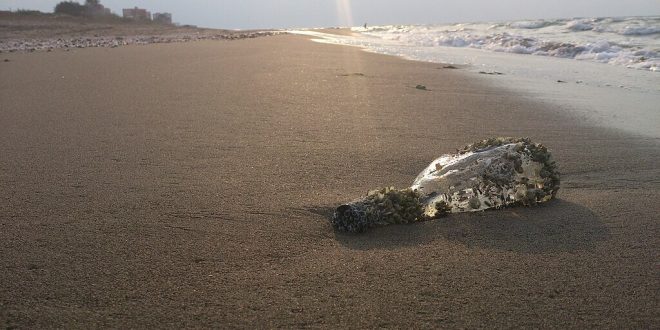The Caspian coast of Iran is at a turning point, where environmental deterioration, economic losses, and geopolitical tensions collide
Climate change, increased evaporation, and decreased inflows from feeder rivers like the Volga are contributing to a dramatic and rapid drop in water levels in the Caspian Sea, the world’s largest inland body of water, with grave implications for surrounding countries, especially Iran.
The 20th century saw a two-meter loss in the Caspian, and since 2020, the rate of decline has accelerated significantly, with yearly declines of up to 30 centimeters. Additional losses may range from 9 to 21 metersby 2100. A 5-meter decrease would reduce the sea’s surface area by 20% (77,000 km2), while an 18-meter drop would cut surface area by 37% (143,000 km2).
Iran’s 650-kilometer Caspian coastline, including ecologically fragile regions like Gorgan Bay and Gomishan Lagoon, would be seriously impacted by such shifts. A 10-meter decline translates into drying up 80% of the Caspian’s shallow zones, resulting in enormous dust plains that are contaminated and salty. Such desiccation, similar to the catastrophe that befell the Aral Sea, causes soil salinization, ruins air quality, and worsens respiratory ailments. Among areas already degraded are the Hyrcanian Forests, a UNESCO World Heritage site that spans Iran and Azerbaijan.
Biodiversity losses are already happening. Reports from Iran of stranded Caspian seal pups indicate early ecological distress. The Caspian seal (Pusa caspica), a species dependent on ice sheets for breeding, could lose between 57% and 81% of its critical habitat with just a 5-meter sea-level decline. Similarly, sturgeon populations, integral to Iran’s caviar industry, are projected to lose 25%–45% of their shallow spawning grounds, amplifying the harmful effects of overfishing and poaching. Ecologically or Biologically Significant Areas (EBSAs) are also at risk, as migrating birds may lose more than half their protected zones. Over 300 endemic invertebrates and 76 fish species could face cascading extinctions. Iran’s EBSAs, already among the smallest in the Caspian region, would lose a quarter of their area under a 10-meter drop scenario, leaving ecosystems extremely vulnerable.
The Caspian wetlands of Iran, especially the Anzali wetland, are also facing swift decline. These crucial habitats are diminishing due to global warming, sediment buildup, and the rerouting of upstream water flows. Forecasts indicate a potential near-complete disappearance of these wetlands by 2100, with periods of seasonal drying possibly starting as soon as 2058. Contaminants from city water runoff, farming, and factory outputs are worsening water purity, threatening fish and avian populations, many already at risk or critically endangered.
The 2018 Caspian Sea Legal Status Convention delineated national seabed sectors but has been difficult to enforce. Iran, allocated just 13% of the seabed despite occupying 20% of the coastline, views the sea as a “common heritage,” and has protested aggressive Russian and Azerbaijani resource extraction. Declining water levels risk altering maritime boundaries, potentially sparking renewed conflicts over fishing rights and subsea assets. Fisheries, once vital to local economies, have been crippled by pollution, overfishing, and habitat loss, threatening livelihoods and food security. Tourism has also waned as coastal resorts experience ecological decay and pollution, while wetland degradation fuels dust storms from drying lakebeds.
Desiccation further erodes infrastructure by stranding ports like Anzali over a kilometer from the shrinking shoreline and halting maritime operations there. Dredging and relocation adds an extra burden on Iran’s heavily sanctioned economy.
The Caspian Sea’s environmental degradation has escalated geopolitical tensions among the littoral states — Iran, Russia, Azerbaijan, Kazakhstan, and Turkmenistan — over resource allocation and maritime security. The region’s militarization is intensifying, highlighted by Russia-Iran defense ties and joint exercises like CASAREX 2025, which underscore the Caspian’s strategic value. However, weak enforcement of the 2018 Legal Status Convention and misaligned priorities create a governance void, potentially turning ecological pressures into political instability.
The Caspian Sea crisis presents severe national security threats to Iran. Possible shoreline displacements might intensify internal instability amid ongoing sanctions and energy deficits. Forecasts indicate yearly economic damages surpassing $10 billion annually by 2030, which could overburden Iran’s military and infrastructure funding while eroding collaboration between the bordering nations. Heightened rivalry over energy resources exacerbates matters, with the Caspian’s enormous deposits — 48 billion barrels of oil and 292 trillion cubic feet of natural gas — fueling disputes over sites like Sardar-e Jangal and routes like the Azerbaijan-Georgia-Turkey pipeline, which circumvents Iran. Both Russia and Iran invoke the 2003 Tehran Convention, an agreement focused on ecological safeguards and resource oversight in the Caspian, to challenge alternative pathways and bolster their regional leverage. Additionally, incidents like suspected Israeli reconnaissance missions amid the June 2025 clashes, substantiated by a fuel canister found near Ramsar, underscore the Caspian’s role as a flashpoint for security issues. Collectively, these factors illustrate how ecological decline, interstate rivalries, and defense challenges are molding Iran’s strategic stance in the area.
Drivers of Declining Water Levels
The Caspian Sea’s declining water levels arise from a combination of climate-driven and other anthropogenic factors. On the climate front, elevated air temperatures, rising approximately 1°C from 1979 to 2015, have increased evaporation throughout the basin, surpassing precipitation and producing a chronic water deficit. Decreased rainfall and waning river discharges have hastened the depletion. The Volga River, contributing nearly 80% of the sea’s freshwater, has suffered from reduced snowmelt and reduced precipitation, further upsetting the Caspian‘s water balance.
Human interventions have exacerbated environmental strains. Widespread dam building and river control measures, particularly on the Volga, have severely limited freshwater deliveries. The eight primary dams along the Volga have slashed the volume of water arriving at the sea. Withdrawals for farming, manufacturing, and city use have siphoned off additional supplies, while contaminants and oil and gas operations have impaired water purity.
The Caspian coast of Iran is at a turning point, where environmental deterioration, economic losses, and geopolitical tensions collide. The only way to slow the Caspian’s decline is to implement coordinated, scientifically grounded, and regionally cooperative policies focused on cooperative monitoring, pollution management, and ecosystem restoration. Otherwise, an environmental emergency could turn into a security and development disaster.





